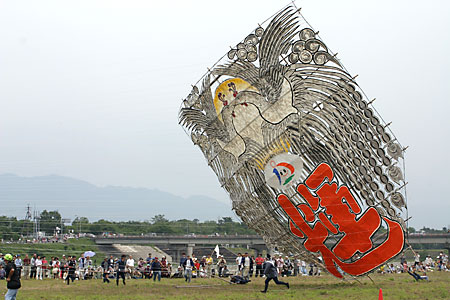|
Kiteflying
A kite is a tethered heavier-than-air or lighter-than-air craft with wing surfaces that react against the air to create lift and drag forces. A kite consists of wings, tethers and anchors. Kites often have a bridle and tail to guide the face of the kite so the wind can lift it. Some kite designs don’t need a bridle; box kites can have a single attachment point. A kite may have fixed or moving anchors that can balance the kite. The name is derived from kite, the hovering bird of prey. The lift that sustains the kite in flight is generated when air moves around the kite's surface, producing low pressure above and high pressure below the wings. The interaction with the wind also generates horizontal drag along the direction of the wind. The resultant force vector from the lift and drag force components is opposed by the tension of one or more of the lines or tethers to which the kite is attached. The anchor point of the kite line may be static or moving (e.g., the towi ... [...More Info...] [...Related Items...] OR: [Wikipedia] [Google] [Baidu] |
